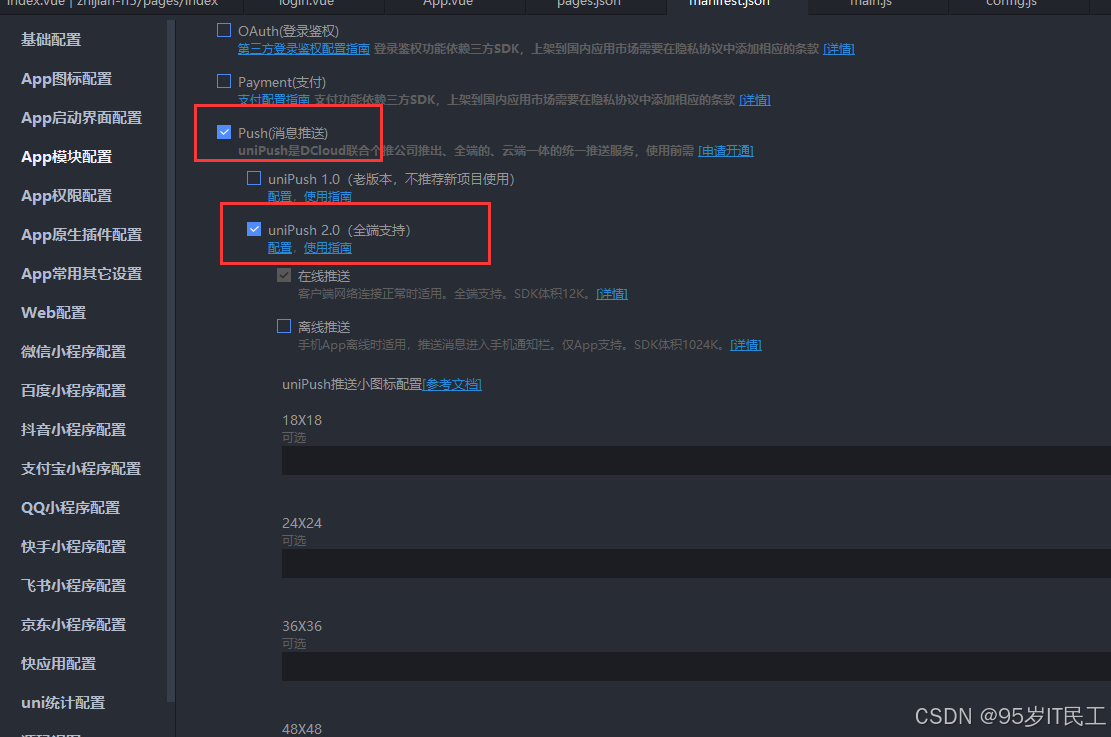目录
1.前言
2.数据库约束
2.1约束类型
2.2 NULL约束
2.3 NUIQUE:唯一约束
2.4 DEFAULT:默认值约束
2.5 PRIMARY KEY:主键约束
2.6 FOREIGN KEY:外键约束
1.7 CHECK约束
3.表的设计
3.1一对一
3.2一对多
3.3多对多
4.新增
5.查询
5.1聚合查询
5.1.1聚合函数
5.1.2 GROUP BY子句
5.1.3 HAVING
5.2联合查询
5.2.1内连接
5.2.2外连接
5.2.3自连接
5.2.4子查询
5.2.5合并查询
6.总结
1.前言
我们上一次介绍了MySQL数据库关于表的增删改查,在平时是用的过程还需要对数据库进行约束以及多表查询,因此今天跟大家分享并介绍数据库约束和多表查询的内容。
2.数据库约束
2.1约束类型
NOT NULL: 指示某列不能存储NULL值。
UNIQUE:保证某列的每行必须有唯一的值。
DEFAULT:规定没有给列赋值时的默认值。
PRIMARY KEY:确保某列(或两个列多个列的结合)有唯一标识,有助于更容易更快速地找到表中的一个特定的记录。
FOREIGN KEY:保证一个表中的数据匹配另一个表中的值的参照完整性。
CHECK:保证列中的值符合指定的条件。对于MySQL数据库,对CHECK子句进行分析,但是忽略CHECK子句。
2.2 NULL约束
我们在数据库创建表时,可以指定某列不为空,比如我们在创建一个学生表时,可以对表的结构进行设置。
-- 创建学生表并设置学生表结构
create table student (
id int not null,
sn int,
name varchar(20),
qq_mail varchar(20)
);
2.3 NUIQUE:唯一约束
指定sn列中的值唯一且不重复的,比如我们重新设置学生表的结构:
-- 重新设置学生表结构
drop table if exists student;
create table student (
id int not null,
sn int unique,
name varchar(20),
qq_mail varchar(20)
);
2.4 DEFAULT:默认值约束
-- 重新设置学生表结构
drop table if exists student;
create table student (
id int not null,
sn int unique,
name varchar(20) default 'unkown',
qq_mail varchar(20)
);
2.5 PRIMARY KEY:主键约束
-- 重新设置学生表结构
drop table if exists student;
create table student (
id int not null primary key,
sn int unique,
name varchar(20) default 'unkown',
qq_mail varchar(20)
);
-- 主键是 NOT NULL 和 UNIQUE 的结合,可以不用 NOT NULL
id INT PRIMARY KEY auto_increment
2.6 FOREIGN KEY:外键约束
外键用于关联其他表的主键或唯一键。
foreign key (字段名) references 主表(列)
下面以创建一个班级表和学生表为例:
- 创建班级表classes,id为主键
-- 创建班级表,有使用MySQL关键字作为字段时,需要使用``来标识
create table classes (
id INT PRIMARY KEY auto_increment,
name VARCHAR(20),
`desc` VARCHAR(100)
);
- 创建学生表student,一个学生对于一个班级,一个班级对应多个学生。使用id为主键,class_id为外键,关联班级表id。
-- 创建学生表
drop table if exists student;
create table student (
id int not null primary key,
sn int unique,
name varchar(20) default 'unkown',
qq_mail varchar(20),
classes_id int,
foreign key (classes_id) references classes(id)
);
1.7 CHECK约束
MySQL使用时不报错,但忽略该约束。
create table test_user (
id int,
name varchar(20),
sex varchar(1),
check (sex = '男' or sex = '女')
);
3.表的设计
3.1一对一
比如:一个学生只能对应一个身份证,一个身份证也只能对应一个学生。

3.2一对多
一个班级有多个学生,但一个学生只能对应一个班级。

3.3多对多
一个学生能够选择多门课程,一个课程可以被多个学生选择。

4.新增
语法:
INSERT INTO table_name [(column [, column ...])] SELECT ...-- 创建用户表
DROP TABLE IF EXISTS test_user;
CREATE TABLE test_user (
id INT primary key auto_increment,
name VARCHAR(20) comment '姓名',
age INT comment '年龄',
email VARCHAR(20) comment '邮箱',
sex varchar(1) comment '性别',
mobile varchar(20) comment '手机号'
);-- 新增班级数据
insert into classes values(601,"六年级一班","1班");-- 新增学生数据
insert into student values(1,100,"张三","123@qq.com",601);
insert into student values(2,101,"李四","456@qq.com",601);-- 将学生表中的所有数据复制到用户表
insert into test_user(name, email) select name, qq_mail from student;-- 查询用户表
select * from test_user;
5.查询
5.1聚合查询
5.1.1聚合函数
| 函数 | 说明 |
| COUNT([DISTINCT] expr) | 返回查询到的数据的数量 |
| SUM([DISTINCT] expr) | 返回查询到的数据的总和,不是数字没有意义 |
| AVG([DISTINCT] expr) | 返回查询到的数据的平均值,不是数字没有意义 |
| MAX([DISTINCT] expr) | 返回查询到的数据的最大值,不是数字没有意义 |
| MIN([DISTINCT] expr) | 返回查询到的数据的最小值,不是数字没有意义 |
- COUNT
-- 统计班级共有多少同学
SELECT COUNT(*) FROM student;-- 统计班级收集的qq_mail 有多少个,qq_mail 为 NULL 的数据不会计入结果
SELECT COUNT(qq_mail) FROM student;

- SUM
-- 统计数学成绩总分
select sum(math) from exam;-- 统计所有数学成绩不及格(<60)人的数学总分,没有则返回NULL
select sum(math) from exam where math < 60;

- AVG
-- 统计平均总分
select avg(Chinese + math + English) from exam;

- MAX
-- 返回数学最高分
select max(math) from exam;

- MIN
-- 返回 > 70 分以上的数学最低分
select min(math) from exam where math > 70;
5.1.2 GROUP BY子句
select column1, sum(column2), .. fromtablegroupby column1,column3;举个例子:
- 准备测试表及数据:员工表,有id(主键)、name(姓名)、role(角色)、salary(薪水)
-- 创建员工表
create table emp (
id int primary key auto_increment,
name varchar(20) not null,
role varchar(20) not null,
salary numeric(11,2)
);-- 添加员工数据
insert into emp(name, role, salary) values
('张三','服务员', 1000.20),
('李四','游戏陪玩', 2000.99),
('孙悟空','游戏角色', 999.11),
('猪无能','游戏角色', 333.5),
('沙和尚','游戏角色', 700.33),
('王五','董事长', 12000.66);

- 查询每个角色的最高工资、最低工资和平均工资。
select role, max(salary), min(salary), avg(salary) from emp group by role;
5.1.3 HAVING
- 显示平均工资低于1500的角色和它的平均工资
select role, avg(salary) from emp group by role having avg(salary) < 1500;
5.2联合查询
实际开发中数据往往来自不同的表,所以需要多表联合查询。多表查询是对多张表的数据取笛卡尔积:

注意:关联查询可以对关联表使用别名。、
下面展示初始化测试数据:
-- 在班级表中新增数据
insert into classes(name, `desc`) values
('计算机系2019级1班', '学习了计算机原理、C和Java语言、数据结构和算法'),
('中文系2019级3班','学习了中国传统文学'),
('自动化2019级5班','学习了机械自动化');-- 在学生表中新增数据
insert into student(sn, name, qq_mail, classes_id) values
('09982','黑旋风李逵','xuanfeng@qq.com',1),
('00835','菩提老祖',null,1),
('00391','白素贞',null,1),
('00031','许仙','xuxian@qq.com',1),
('00054','不想毕业',null,1),
('51234','好好说话','say@qq.com',2),
('83223','tellme',null,2),
('09527','老外学中文','foreigner@qq.com',2);-- 创建课程表
create table course(id int primary key auto_increment, name varchar(20));-- 在课程表中新增数据
insert into course(name) values
('Java'),
('中国传统文化'),
('计算机原理'),
('语文'),
('高阶数学'),
('英文');-- 创建成绩表
create table score(score decimal(3, 1), student_id int, course_id int);--在成绩表中新增数据
insert into score(score, student_id, course_id) values
-- 黑旋风李逵
(70.5, 1, 1),(98.5, 1, 3),(33, 1, 5),(98, 1, 6),
-- 菩提老祖
(60, 2, 1),(59.5, 2, 5),
-- 白素贞
(33, 3, 1),(68, 3, 3),(99, 3, 5),
-- 许仙
(67, 4, 1),(23, 4, 3),(56, 4, 5),(72, 4, 6),
-- 不想毕业
(81, 5, 1),(37, 5, 5),
-- 好好说话
(56, 6, 2),(43, 6, 4),(79, 6, 6),
-- tellme
(80, 7, 2),(92, 7, 6);



5.2.1内连接
select 字段 from表1 别名1 [inner] join表2 别名2 on 连接条件 and 其他条件;
select 字段 from表1 别名1,表2 别名2 where 连接条件 and 其他条件;例如:(1)查询“许仙”同学的成绩
select stu.name, sco.score from student as stu join score as sco on stu.id = sco.student_id and stu.name = '许仙';-- 也可以采用下面这种方法
select stu.name, sco.score from student as stu, score as sco where stu.id = sco.student_id and stu.name = '许仙';

(2)查询所有同学的总成绩,及同学的个人信息:
-- 成绩表对学生表是多对一关系,查询总成绩是根据成绩表的同学id来进行分组的
select stu.sn, stu.name, stu.qq_mail, sum(sco.score)
from
student as stu join score as sco
on stu.id = sco.student_id
group by sco.student_id;
(3)查询所有同学的成绩,及同学的个人信息:
-- 查询出来的都是有成绩的同学,“老外学中文”同学没有显示
select * from student stu join score sco on stu.id=sco.student_id;

-- 学生表、成绩表、课程表3张表关联查询
select stu.id,stu.sn,stu.NAME,stu.qq_mail,sco.score,sco.course_id,cou.NAME
FROM
student stu
JOIN score sco ON stu.id = sco.student_id
JOIN course cou ON sco.course_id = cou.id
order by stu.id;
5.2.2外连接
外连接分为左外连接和右外连接。如果联合查询,左侧的表完全显示我们就说是左外连接;右侧的表完全显示我们就是是右外连接。
语法:
-- 左外连接,表1完全显示
select 字段名 from 表名1 left join表名2 on 连接条件;- 右外连接,表2完全显示
select 字段名 from 表名1 right join表名2 on 连接条件;例如查询所有同学的成绩,及同学的个人信息,如果该同学没有成绩,也需要显示出来。
-- “老外学中文”同学没有考试成绩,也显示出来了
select * from student stu left join score sco on stu.id=sco.student_id;
-- 对应的右外连接为:
select * from score sco right join student stu on stu.id=sco.student_id;

-- 学生表、成绩表、课程表3张表关联查询
SELECT stu.id,stu.sn,stu.NAME,stu.qq_mail,sco.score,sco.course_id,cou.NAME
FROM
student stu
LEFT JOIN score sco ON stu.id = sco.student_id
LEFT JOIN course cou ON sco.course_id = cou.id
order by stu.id;
5.2.3自连接
-- 先查询"计算机原理"和"Java"课程的id
select id, name from course where name = 'Java' or name = '计算机原理';-- 再查询成绩表中,"计算机原理"成绩比"Java"成绩好的信息
select s1.*
from score s1,score s2
where
s1.student_id = s2.student_id
and s1.score < s2.score and s1.course_id = 1
and s2.course_id = 3;
5.2.4子查询
- 单行子查询:返回一行记录的子查询
select * from student where classes_id=(select classes_id from student where name='不想毕业');
- 多行子查询:返回多行记录的子查询
-- 使用IN
select * from score where course_id in (select id from course where name='语文'or name='英文');-- 使用 NOT IN
select * from score where course_id not in (select id from course where name!='语文'and name!='英文');
注意:
在 from 子句中使用子查询:子查询语句出现在 from 子句中。这里要用到数据查询的技巧,把一个子查询当做一个临时表使用。
5.2.5合并查询
- union
该操作符用于取得两个结果集的并集。当使用该操作符时,会自动去掉结果集中的重复行。
例如:查询id小于3,或者名字为“英文”的课程:
select * from course where id<3
union
select * from course where name='英文';-- 或者使用or来实现
select * from course where id<3 or name='英文';
- union all
-- 可以看到结果集中出现重复数据Java
select * from course where id<3
union all
select * from course where name='Java';


















